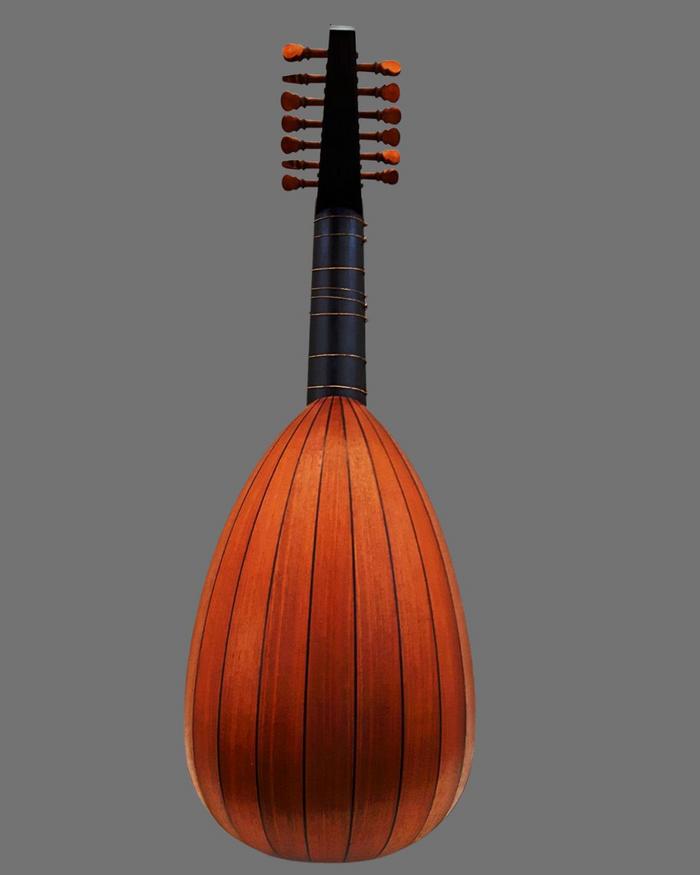Musical instruments ➔ Renaissance lute
Identifier:
MusA-802Description
With its origins in Arab culture, the lute is a periphrastic chordophone, which can be traced back to 13th century Spain. A profound transformation over the following centuries led it to the form we know today, from the 16th century onwards, having evolved from the original four orders to twelve.The Renaissance lute is characterised by an easel glued to the top, a headstock with side pegs and inclined at the back at almost ninety degrees to the neck. Covered by a scale flush with the top, which has a rosette, the neck has movable, gutted frets, the positioning of which is an arduous task for the player. In the second half of the 16th century, two new chordophones appeared, known as arquialaúdes, with longer necks than their predecessors and with two heads, allowing for a greater number of bass strings, some of which were plucked and others free (called bordões): the theorbo and the chitarrone (an Italian instrument with fourteen orders).
Despite the great prominence it enjoyed in Europe, the lute eventually fell into disuse (its decline coinciding with the beginning of the classical period and the disappearance of the basso continuo), but was later revived, above all with the practice of ancient music using instruments of the time.
Dimensões
73 cm; length;57 cm; length of the rope/cordDate
2002 Date manufactureInternal Notes
Manufaturado em 2002 por Joaquim Domingos Capela em homenagem a Maria Hormizinda.- O MusA-802A é o número de inventário da caixa do instrumento.Languages
PortugueseEnglish
Rights Holder
Universidade de Aveiro@ Creative Commons.
Type
CC BYRelated people
Engenheiro Joaquim Domingos Capela (1943) (luthier)Oficina Joaquim Domingos Capela (factory manufacturer)
Related place
São Félix da Marinha (describes)Related Term
Related Terms
Musical instruments (depicts)UA University cooperation (depicts)
